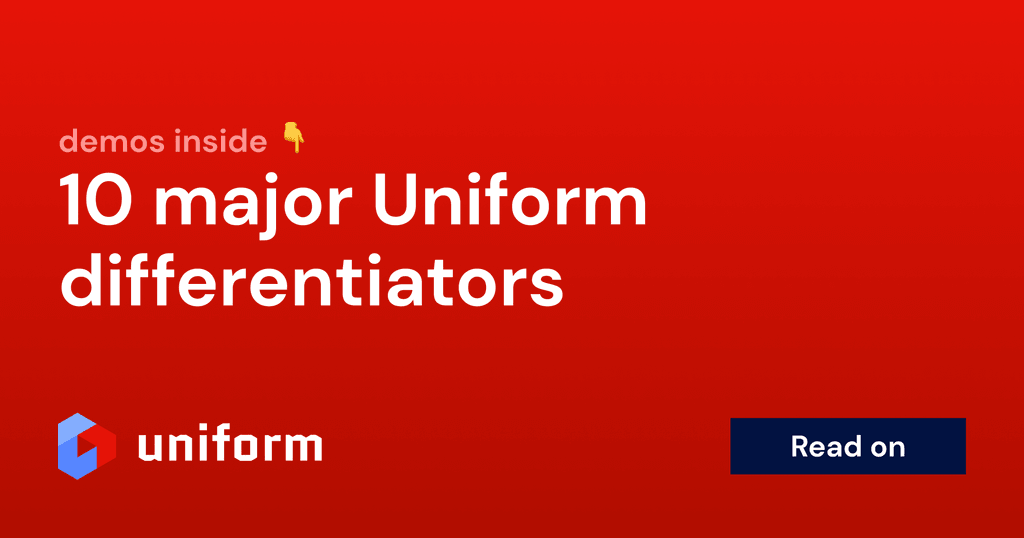Uniform blog/Evaluating and choosing a modern CMS
Evaluating and choosing a modern CMS
Evaluating and choosing a modern CMS
When is the right time to move on from your content management system (CMS)? The answer depends on where you are in your CMS journey. From evaluation to implementation, choosing a CMS that addresses your business needs and accelerates the digital experiences you create can be the difference between plenty of gains or pain.
In a recent CMSWire webinar titled It’s Not Me, It’s You, CMS: When It’s Time to Move On, I chronicled the history of CMSes, their role in the modern stack, and the effect of their evolution on the evaluation process. Below are the key takeaways.
CMSes are always evolving, resulting in complexity
As CMSes evolve, trade-offs and consequences are the norm. Even though the first-generation CMSes solved a slew of technical problems, the systems’ performance and architectural limitations meant that you often had to prerender content and grapple with complicated underlying platforms. The acceleration of databases, computers, and networks has given rise to digital experience platforms (DXPs) and suite technologies—along with more dynamic and personalized content. The more complex CMSes are, the more costly and difficult it is to upgrade DXPs.
Companies are transitioning from headless to composable
Over the last few years, many companies have turned to headless CMSes for greater front-end flexibility, scalability, creativity, and enhancements—à la carte style. However, headless CMSes align more with developers, leaving business users out in the cold, let alone that integrating systems into a cohesive stack is time consuming.
Consequently, CMSes have become a constant pendulum swing between developers focused on managing files and infrastructure and business users seeking a visual-oriented workflow. As a balance, the industry has been leaning toward composable architectures that accord developers their preferred tools and languages while enabling business users to assemble digital experiences attuned to consumer demands.
Traditional approaches no longer work
Change being the only constant, the CMS landscape has shifted alongside the growing adoption of composable. Whether you’re switching your CMS to a headless or traditional solution, keep in mind these realities around content management:
- The desktop is no longer the primary anchor for digital experiences. Rather than performing tasks like purchases and lead acquisitions on the desktop, most consumers now do that on mobile.
- Managing pages is a thing of the past. Instead of organizing and moving content among hierarchical folders in CMSes, businesses nowadays center on delivering omnichannel experiences and facilitating the ways in which audiences relate to content and brands.
- More vendors deliver software as a service (SaaS). Before the rise of SaaS, businesses had to download and install on-premise applications that required heavy customization. With SaaS, vendors handle installation, service-level agreements, and performance, freeing up businesses to connect the applications to the other tools in their stack.
- Multiple CMSes manage multiple sources of content. Organizations are switching from a single, all-in-one CMS to multiple legacy and headless systems for features that accommodate omnichannel experiences.
Choose a CMS that plays well with others
Different CMSes serve different use cases for different reasons. For example, a CMS might handle transactional tasks like brand awareness, lead generation, and B2C sales; another system would manage an informational site that hosts myriad resources and large documents that favor desktop experiences.
As you move from single-channel, informational experiences to omnichannel, transactional ones, be sure to evaluate vendors through a composable—not feature-based—lens. Since adding channels leads to more integrations and an ever more intricate stack, composability becomes crucial.
Learn how to run a modern evaluation process
To assess whether a CMS would serve your business well, perform these steps:
- Document your organization’s needs. Take stock of where you are as well as what’s working and not working.
- Spell out your goals and opportunities. Keep your objectives front and center to track your project’s progress.
- Shake up the RFP format. Instead of features, concentrate on the usability of the CMS.
- Run a proof of concept. Take advantage of free trial accounts to try out new technologies. Be sure to involve key stakeholders at the outset to resolve technical and business needs and avoid silos.
DXCPs ease the transition from legacy to headless
Of significant help to the evaluation process is Uniform, a digital experience composition platform (DXCP) through which you can easily and quickly connect systems, swap old systems with new ones, and try different tools to see which ones best meet your needs for personalization and omnichannel delivery.
Uniform DXCP offers two major benefits:
- Bridging of the old and new, i.e., simultaneously modernizing the technological capabilities of suite vendors and furnishing business users with no-code or low-code interfaces for building digital experiences.
- Vendor neutrality, affording both developers and business users the freedom to work with the tools they prefer.
Become acquainted with the best practices
For more insights on the role of CMSes in the modern stack and the path that leads to a choice of an efficacious CMS, watch the webinar.

It’s Not Me, It’s You, CMS: When It’s Time to Move On







.jpg&w=1024&q=90)
